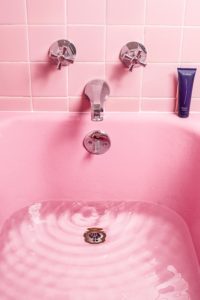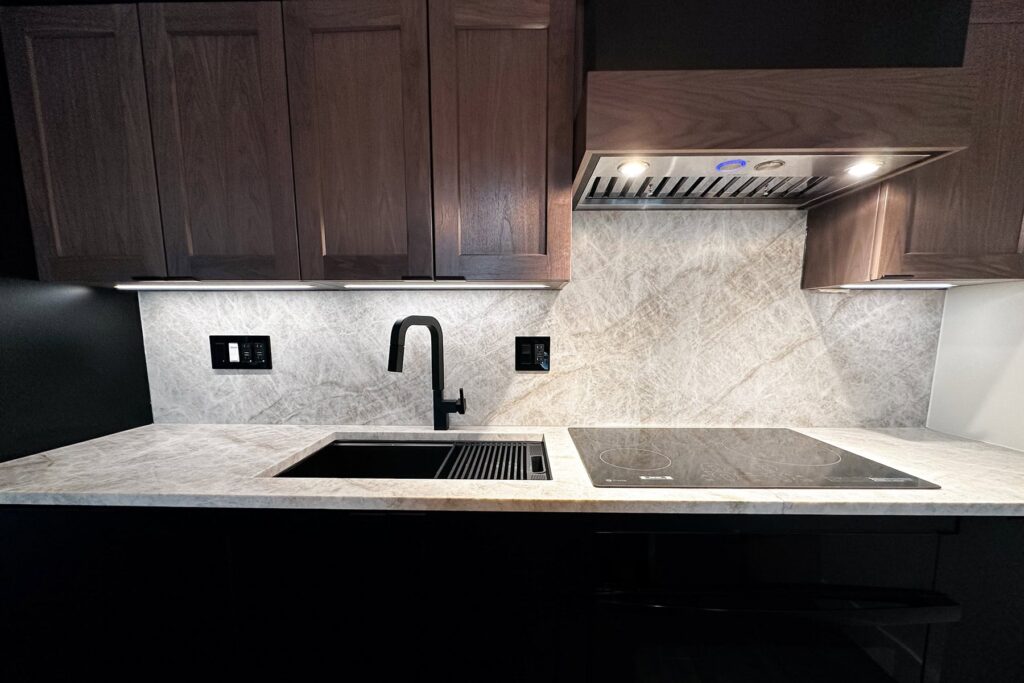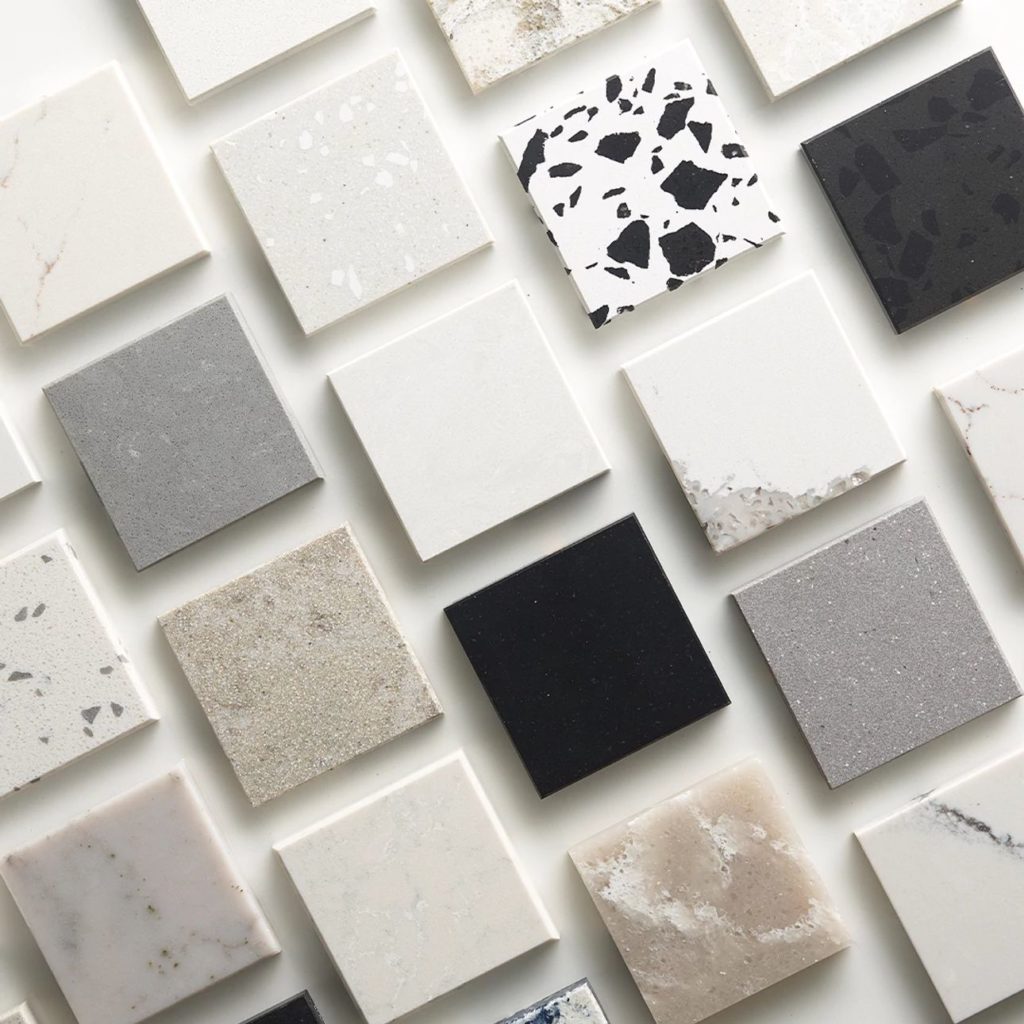 Our last blog post talked about the origin of tiles and different kinds of tiles. For this week, we wanted to dive a bit further into their influence throughout history. Keeping in mind that Valentine’s Day is just a couple of days away, we wanted to focus more specifically on pink architecture and design.
Our last blog post talked about the origin of tiles and different kinds of tiles. For this week, we wanted to dive a bit further into their influence throughout history. Keeping in mind that Valentine’s Day is just a couple of days away, we wanted to focus more specifically on pink architecture and design.
One of the most notable uses of the color pink in architecture and design is pink bathrooms. During the presidency of Dwight D. Eisenhower, First Lady Mamie Eisenhower had quite the fondness for pink. She updated the private quarters of the White House with this color. The particular shade of pink was so associated with her, it became known as “Mamie Pink”, or sometimes “First Lady Pink”. Because of Mamie’s influence, 1 in 4 homes built during this time had pink bathrooms. Pink kitchens were also popular during this time, though it’s unclear how many existed. Ceramic tile work done during this time was usually of very high quality. The tiles themselves were often more substantial and the way tiles are set in place was more adhesive. Because of this, it is extremely labor-intensive and expensive to get rid of them, hence why so many pink bathrooms have survived.
There are entire cities dedicated to the color pink. One of them is located in India. Jaipur was mostly built in the 1700s under the order of Rajput ruler Sawai Raja Jai Singh II. Since 1876, the city has been defined by its dusty pink hue. It was painted pink to welcome Queen Victoria’s husband, Prince Albert. This gave Jaipur its status as the “Pink City” of India. The color was chosen because historically, it represents welcoming and hospitality. The paint was produced from a calcium oxide compound and is very durable in the dry conditions of Jaipur. In 1877, it became illegal to paint the buildings any other color than Jaipur Pink, as it is known. This came from the ruler’s wife and her absolute adoration for the color.
Europe also has a “pink city”. Toulouse, France, is known for its distinct architecture. Buildings consisting of reddish-pink clay bricks form why it is called Ville Rose, or “Pink City”. When the Garonne River pushed back after the last glacial era about 10,000 years ago, Toulouse (which at the time was known as “Tolosa”) extended on clay terraces. So, naturally, the town capitalized on its abundance of building materials. The clay had a dense concentration of iron oxide that gave it a pink color when in the fire. This was used to make bricks. These were cheap and easy to make, as well as environmentally friendly. For many years, the reddish-pink bricks were used to build the city’s homes, official buildings, and religious structures. This distinct pink brick architecture was partly responsible for the development of the Romanesque and Gothic styles in the Languedoc region of France.
Pink architecture also exists here in Chicago. If you’ve ever been on Lakeshore Drive, you’ve had to have seen the iconic Edgewater Beach Apartments. Benjamin Marshall designed the apartment complex to give residents the sense they were transported to the Mediterranean. The building was decorated with terra cotta and granite flourishes and painted “sunset pink,” a color Marshall associated with the Mediterranean. It has remained an iconic presence in the city and Edgewater neighborhood, even as the community has changed around it. It was officially declared a landmark in 1994.
There are also plenty of architects who advocate for pink in their work. One of the most well-known architects, Frank Lloyd Wright, was a big fan of the color pink. When he was designing the Guggenheim museum in New York, he drafted two versions of it in different shades of pink. One shade was bright, hot pink, and the other was a more peachy pink. Other pink buildings of his include The Marin County Civic Center in California (known as “Big Pink” for its light pink stucco walls), The King Kamehameha Golf Club (originally based on designs for a house for Marilyn Monroe), and Arizona State University’s performing arts center, Grady Gammage Auditorium (which has been said to look like a “pink wedding cake”). Wright also developed two similar hues — Wright Shell Pink and Wright Flesh Pink — into a palette for his historic home and office in Arizona, Taliesin West.
After reading this, it’s almost a guarantee that you’re thinkin’ pink. But in case you’re looking for further design inspiration, we recommend you tune in to next week’s blog post. We’ll discuss the history of mosaic art and how it’s being used in residences today!
References:
https://www.cnn.com/style/article/jaipur-pink-city-architecture-photography/index.html
https://www.dunnedwards.com/colors/specs/posts/millennial-pink-architecture-and-interior-design-trend
https://www.dreammaker-remodel.com/livonia/blog/why-were-pink-bathrooms-so-popular-in-the-1950s/
https://savethepinkbathrooms.com/10-facts-about-pink-bathrooms/
https://www.hgtv.com/design/design-blog/design/saving-the-pink-bathrooms-with-pam-kueber
https://www.nytimes.com/2010/12/30/garden/30pink.html?_r=0
https://www.apartmenttherapy.com/5-famous-architects-who-loved-millennial-pink-before-it-was-cool-246584

